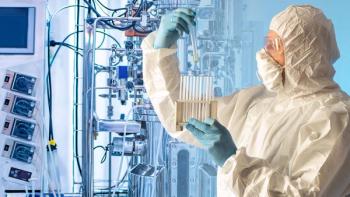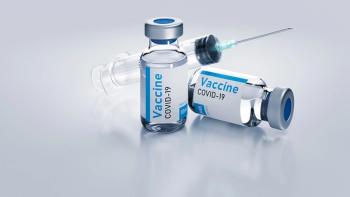
- BioPharm International-12-01-2009
- Volume 22
- Issue 12
Disposables in Rapid Response Manufacturing: The Next Steps
Suppliers, manufacturers, and governments must work together to plan how best to develop and deploy disposable systems for emergency response.
The H1N1 pandemic is effectively a test of our preparedness for rapid response to new threats. So it is instructive to review how well the industry has been able to respond in this case. The results are not encouraging. As Prof. Peter Dunnill of the Department of Biochemical Engineering at University College London, notes in a recent article, "If you look at the situation, the amount of vaccine being produced globally is very small."1 The implication is that in the event that H1N1 becomes troublesome, then it is likely that commercial contracts will be broken by governments to ensure that supplies reach the population where the manufacturing capacity is based (most vaccine contracts include a clause allowing them to be broken under extraordinary circumstances, such as a health emergency). In addition, deliveries of vaccine are late and there are reports that deliveries are 50% lower than they should be.2
Miriam Monge
Thus, we see that in the current pandemic, it is taking months for manufacturing to respond, the overall capacity is insufficient for the world's population, and there are problems in ramping up production. It is against this backdrop that suppliers of disposables technologies are offering options.
Andrew Sinclair
In this article—the second of a two-part piece on rapid response—we consider the manufacturing component and the role of disposable technologies. In considering emergency preparedness, however, we need to consider the capability of producing not just vaccines but also therapeutic proteins. The US government is spending significant sums of money to encourage the building of manufacturing capacity in the US to meet short-to-medium term needs while also looking for innovative approaches to put in place truly rapid response manufacturing.3 The main catalyst for innovation is the accelerated manufacturing of pharmaceuticals (AMP) program, run by the US Department of Defense. The program is focused on developing new technologies that will revolutionize the manufacture of protein-based therapeutics. A key component to achieving the goals of this program is the use of disposable technologies in both process development and manufacturing. Yet, if we reflect on the conclusions of Part 1 of this article,4 there are a number of challenges relating to the current use of disposables:
- The disposables supply chain is immature and lacks flexibility to respond to rapid changes in demand. The lack of standardization among disposable suppliers considerably increases the supply chain risk, because in many cases, if a supplier cannot meet a deadline due to lack of available manufacturing capacity, or due to lack of availability of certain components, the vaccine or drug manufacturer cannot turn to an alternative supplier.
- There is a need to be able to deliver flexible manufacturing to where it is needed. How would this be achieved with disposables, which require an ongoing supply of consumables? Would disposables be stockpiled as a precaution for possible border closure?
- Standardization of disposable components is also needed to enable rapid reconfiguration of facilities to manufacture different products. There is currently a lag time, which can stretch several weeks whilst new components are qualified, as Tibor Nemes of Novartis emphasized in part 1.
- Better training is needed to help manufacturers understand how disposables make it possible to design facilities differently, enabling fully modular facilities working with standardized disposable systems throughout. Such facilities can be expanded rapidly with minimum effort to add capacity.
- The industry needs a better understanding of the infrastructure requirements that are needed when working with disposable technologies (as opposed to traditional systems) to support a rapid response.
None of these issues are addressed directly by the AMP program, but they do need to be addressed if we are to be truly flexible in terms of a rapid response.
THE SOLUTION?
Focusing just on the manufacturing element, the ideal approach would be to have stockpiles of product (a good example in the pandemic is Tamiflu), but in reality, unless we have a clearly identified threat, it is difficult to stockpile. For a generalized response, therefore, we are looking at two options:
1. Modular deployable manufacturing units. This assumes that we can quickly mobilize and send these to the areas where manufacturing is needed most. This approach may be flawed on two counts, however. First, to run any form of biomanufacturing operation requires skilled people, and in such a situation they would not be readily available. Second, there are likely to be restrictions on movement between countries during a pandemic.
2. Strategic manufacturing locations. By having established operations strategically located, it should be possible to respond effectively to an emergency once the manufacturing process has been defined.
The ability to establish strategic manufacturing capacity and redeploy it for use by the government is not new. What is new is the potential offered by disposables technologies to make this much easier. To understand why, let's consider some of the issues that make it difficult to reconfigure a traditional facility:
- integrated pipework and building
- clean-in-place (CIP) and steam-in-place (SIP) systems
- associated utility infrastructure
- software
- equipment.
Several of these issues are linked. For example, reusable equipment requires cleaning, sanitization, and sterilization between uses, and this requires a lot of piping and infrastructure, which then requires automation. CIP drives the requirement for high quality water (up to 80% of water for injection is used for cleaning).5 The promise of disposable manufacturing is that by making the processing equipment and flow paths single-use, a lot of the complexity disappears because the building is effectively decoupled from the process. The implications of this are significant:
- Processes can be built up from stand-alone modules that can be reconfigured easily.
- Processes are physically independent of the buildings in which they take place, thereby allowing the deployment of a process within any simple building structure.
- A process can be upgraded and potentially scaled up with little disruption. For example, if you were using a 1,000-L bioreactor and you wanted to upgrade to 2,000 L, the larger bioreactor could be tested and validated off line and quickly moved in when needed.
Such a setup allows for a facility to be reconfigured for a new manufacturing process quickly—within 2 to 3 months. In addition, a facility can be designed to include cheap "fallow" space that could be quickly configured to provide new cleanrooms for a disposable manufacturing system (in 6 to 9 months) This then would allow a staged response to any emergency.
We are now in a fortunate situation where a number of suppliers are committed to establishing a disposable manufacturing line that could support the idea of rapid response manufacturing. Listed below are some of the leading companies who are active in this area, along with their main product line that would aid rapid response:
- GE Healthcare, ReadyToProcess
- Millipore, Mobius
- Xcellerex, FlexFactory.
Figure 1. An artist rendering of Xcellerex's modular FlexFactory system.
The companies' approaches vary. For example, Xcellerex provides each piece of equipment within its own process environment (Figure 1), thereby offering the potential of running a process in controlled-not-classified space. GE Healthcare and Millipore, in turn, offer solutions built around modules (Figure 2) that sit in a cleanroom environment.
Figure 2. Millipore Mobius manufacturing modules.
The issues with these approaches are maturity and scale, although now with the advent of the 2,000-L disposable bioreactor, there is the option to use multiple bioreactors to achieve the desired capacity. The benefits of this approach are significant in terms of flexibility, speed of response, and cost. Xcellerex, for example, says that a greenfield site can be established in 12 to 18 months from start to operation and it would cost 50% less than a reusable facility.6
PRACTICALITIES
At a practical level, it is clear that rapid response can only be addressed by establishing facilities at strategic locations that could supply the main population centers. Short- to medium- term options should seek to establish some form of revenue-generating facility with the capability of expansion. Ideally, government and industry would collaborate at some level, whereby the response would be a measured one, and to encourage the establishment of this type of facility, regardless of who operates it.
In the near future, it is easy to imagine that suppliers will be in a position to supply the type of facility described above. If it is to work in the short term, however, compromises are required. First, because of the lack of standardization and interoperability among the systems and components offered by different suppliers, in the short term a facility may have to commit significant parts of its operation to one supplier.
Second, in the event of an emergency, two factors will affect the ability to ramp up production: the capacity of the supply chain to respond to increased demand and restrictions on the movement of people and materials. Therefore, manufacturers would need to stockpile all necessary disposable components (and other raw materials and specialist consumables) close to their key manufacturing centers.
CONCLUSIONS
At the moment, rapid response strategies and approaches are being developed by governments and interested parties, but we do not have a coherent approach. The goal is to establish meaningful strategies for protecting the population in a pandemic. At the policy level, it is important that we have clear definitions of the scenarios that we want to protect against. These scenarious also must be tested in terms of whether they are real threats rather than "what if" threats; "what if" threats are easy to formulate but are often used as a form of scaremongering. We then have to be realistic when considering how governments will behave when responding to real and tangible threats. If we take all this into consideration, then it is possible to build a viable plan for a staged manufacturing response to a threat.
Disposable manufacturing technologies will be key to delivering that staged response, but much work needs to be done by the industry and governments to transform this into reality. At the moment, we see developments within the supplier base to provide the disposable manufacturing systems required, but this is only part of the solution. Suppliers, manufacturers, and governments need work together to consider how best to develop and deploy disposable systems in the event of an emergency.
Andrew Sinclair is the managing director and Miriam Monge is the vice president of marketing and disposables implementation, both at Biopharm Services, Chesham, Bucks, UK, +44 1494 793 243,
REFERENCES
1. Doubts surface over UK swine flu vaccine supply. Times Online. 2009 July 17 [cited Sept. 16, 2009]. Available from
2. Jack A. Baxter behind on swine flu vaccines for Britain. Financial Times [online]. 2009 Sept 10 [cited 16 Jan. 2009]. Available from:
3. Defense Sciences Office [homepage on the Internet]. Accelerated Manufacture of Pharmaceuticals. Available from:
4. Sinclair A, Monge M. The disposables advisor. The role of disposables in rapid response manufacturing. BioPharm Int. 2009 Aug;22(8): 28–31.
5. Sinclair A, Leveen L, Monge M, Lim J, Cox S. The environmental impact of disposable technologies. BioPharm Int. Guide to Disposables. 2008 Nov;21(11) supp, p. 4–15.
6. Xcellerex [homepage on the Internet; cited 2009 Sept]. Available from:
Articles in this issue
about 16 years ago
BioPharm International, December 2009 (PDF)about 16 years ago
CDMOs Benefit from the Growing Biologics Marketabout 16 years ago
Quality by Design for Biotechnology Products—Part 2about 16 years ago
Licensing of Expression Systemsabout 16 years ago
The Promise and Perils of Vaccinesabout 16 years ago
Speeding Up Slowlyabout 16 years ago
Freeze-Thaw Performance and Robustness Assessment of Celsius FFT 6Labout 16 years ago
Faking ItNewsletter
Stay at the forefront of biopharmaceutical innovation—subscribe to BioPharm International for expert insights on drug development, manufacturing, compliance, and more.





